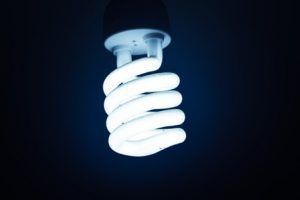
Running a business is a balancing act. On one hand, you’re constantly working to improve performance, output, and reach, all while trying to be more efficient. Efficiency can be obtained in many different ways depending on your industry and your particular niche.
That being said, saving on energy costs is a universal thing for most businesses. Join us as we discuss several popular ways you can save on your energy costs.
Set Up your HVAC Properly
Temperature control is essential for any modern workspace. Wherever you have people spending hours upon hours performing any kind of work, you’ll need to ensure that they’re warm in the winter, and cool in the summer.
Unfortunately, HVAC systems are often the main energy consumer for businesses that aren’t involved in heavy manufacturing. Finding a temperature that works for everyone is difficult as it is, but optimizing the HVAC for efficiency is a whole different ball game. Just ask any office manager ever.
However, tweaking the AC can be well worth the effort if you can set a compromise between people’s preferences and efficiency. Dropping or increasing the temperature for just a few degrees can significantly change your energy consumption.
Using Energy Efficient Equipment
Every business or organization uses some sort of equipment to achieve their production goals or sales goals. Whether we’re talking about simple computers or specialized equipment that is conforming to stringent safety requirements, this equipment will add to your energy bill. The best way to reduce consumption and save on energy costs is to invest in newer equipment.
Depending on your industry and products/services you offer, such an investment can be a hefty one. That being said, it is usually worth it. Matter of fact, such investments bring cost reductions and optimized efficiency in a vast majority of cases.
Investing in new equipment also tends to boost productivity, reduce costs of materials, and improve quality control.
If these two tips haven’t really helped you reach your efficiency goals, it could be a good idea to perform an energy audit. Energy audits are usually performed by your local utility companies, and they tend to be free most times. Check what’s available in your area and talk to utility companies that are near you.
When you find the right company for the job, you’ll get a visit from a professional who will do a thorough inspection of your site. They will check for energy leaks, insulation issues, systems that can be optimized, and more.
When they’re done, you’ll get a detailed report of things you can fix that will help you reduce your energy consumption and ultimately save money.
Develop a Collective Energy Conservation Conscience Within Your Organization
Sometimes the best way to optimize your energy consumption and cut down on costs is to develop a culture of energy conservation within your organization. This isn’t to say that you have to organize seminars, but rather start talking with your employees about what they can do to reduce the overall energy footprint while at work.
Things such as turning off the lights when leaving the room, shutting down computers at the end of the day, leaving the thermostat alone, and similar can help reduce energy costs. The individual savings probably won’t be too dramatic, but things tend to add up quickly.
Install LED lighting
Lightbulbs are something very few people think about in a business setting. On a similar note, only a few people out there realize the difference in power consumption between regular incandescent light bulbs and their modern LED counterparts.
Most standard incandescent bulbs tend to use anywhere from 70 to 150+ watts of power per hour. That’s not so bad, right? Add 10 light bulbs, and you already have a kilowatt of energy gone in an hour. Most organizations have a lot more than just 10 lightbulbs in their offices, plants, or work sites.
Going with an LED bulb drops that power consumption by 70% on average. If you take that there are lightbulbs that rarely ever get turned off in modern office buildings, all of that consumption tends to add up quickly.
Work Outside the Box
Transforming your business into an energy-efficient workplace often requires an investment. More importantly, such a transformation often requires thinking outside the box. Every organization is different and every office space has its own set of issues that require individual solutions.
Your ability to find these solutions and navigate the problems presented by your environment will be the main factor when it comes to reducing your energy consumption. This process could be difficult, but it’s well worth the effort in the long run.












